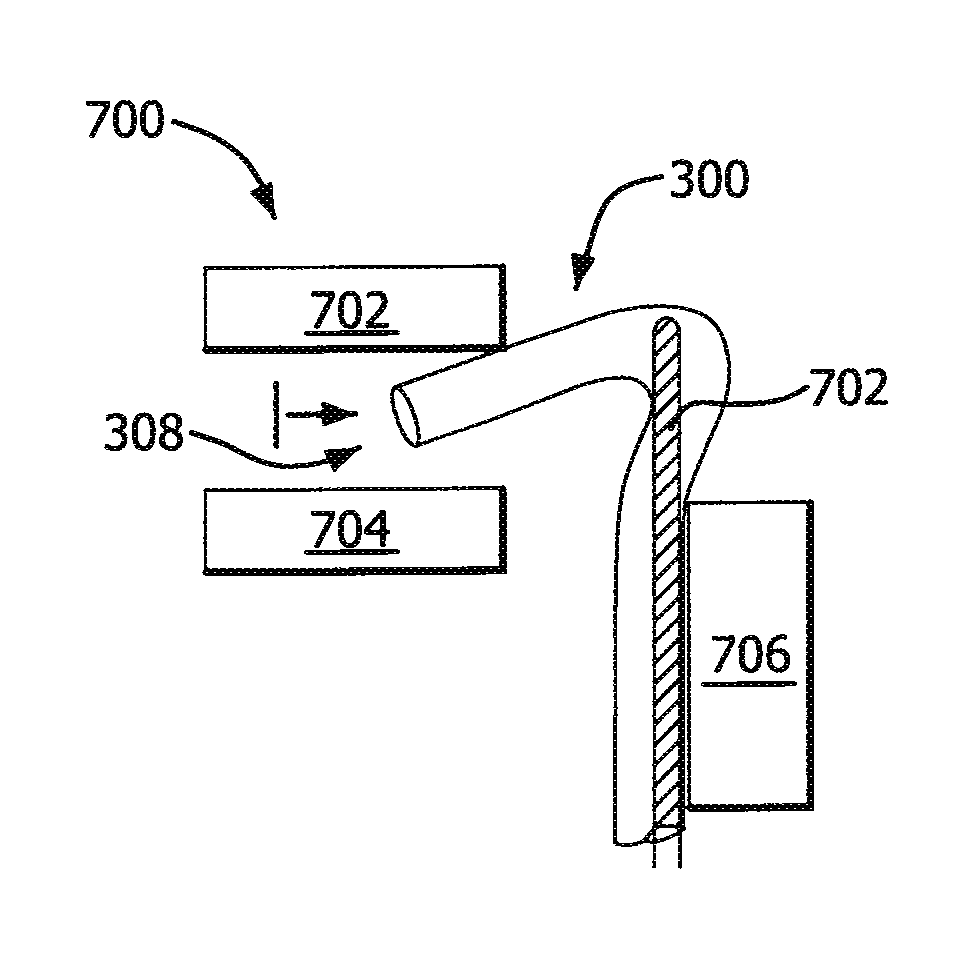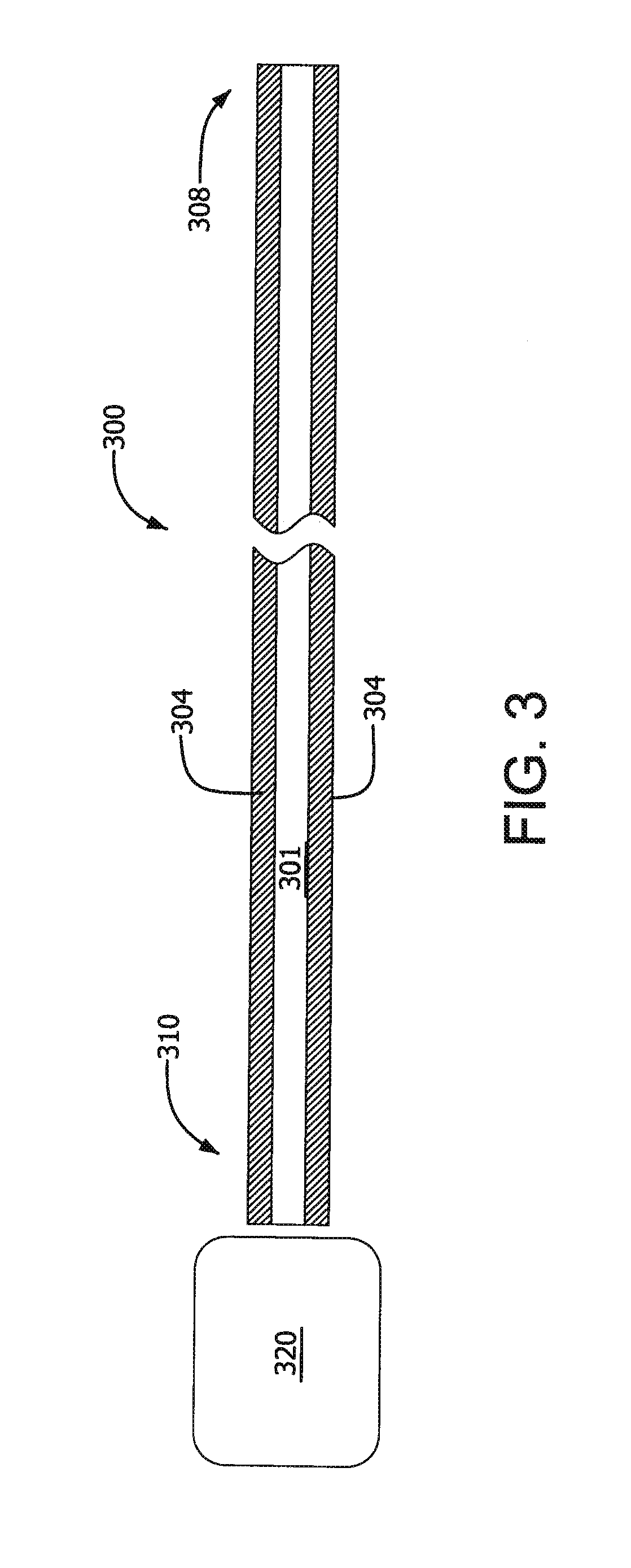Methods and apparatus for an adjustable stiffness catheter
a catheter and adjustable technology, applied in the field of catheter systems, can solve the problems of difficult selective catheterization of certain vessels of the human body, navigation from the descending aorta, aorta, etc., and achieve the effect of easy navigation of the guide wir
- Summary
- Abstract
- Description
- Claims
- Application Information
AI Technical Summary
Benefits of technology
Problems solved by technology
Method used
Image
Examples
embodiment 1
Thermal Activation
[0039]In one embodiment, the activation means includes a controller 320 communicatively coupled to body 304 as well features within body 304 that are together adapted to place the body in the second state by subjecting at least a portion of the catheter 300 to a reduction or change in temperature.
[0040]Referring now to FIGS. 8 (a)-(b) in conjunction with FIG. 1, a catheter 300 in accordance with one embodiment generally includes two auxiliary lumens or channels 802 and 804 that are interconnected (e.g., fluidly coupled near a distal end) such that the coolant travels through body 304. The channels 804 and 802 are separated, for example, by a membrane (such as an ePTFE membrane) 806.
[0041]After delivery of catheter 300 (during which it is in the first state), a coolant 805 such as liquid nitrogen is supplied to channel 804 (e.g., via a coolant delivery system within controller 320), where it travels parallel to lumen 301 along the length of (or a portion of) body 30...
embodiment 2
[0043]Referring now to FIGS. 16 and 17 in conjunction with FIG. 1, in one embodiment, the activation means includes controller 320 communicatively coupled to the body 304 and components within body 304 that are adapted to place body 304 in the second state by subjecting it to an increase in axial compression.
[0044]As shown in FIG. 16, one or more tension lines 1602 may be used to selectively apply a compressive force to body 304. The tension lines 1602 are attached at the distal end 308 of catheter 300 and are slideably received by corresponding accessory lumens 1402 that pass through a series of body segments 1605. The accessory lumens 1402 are preferably sized to allow the free axial movement of tension lines 1602. Depending upon the particular design, body segments 1605 will typically be separated by a small interstitial gaps 1607.
[0045]The tension lines 1602 are subjected to approximately zero tension (i.e., are generally “slack”) while navigating the anatomy du...
embodiment 3
[0049]In one embodiment, the activation means includes controller 320 communicatively coupled to the body 304 and adapted to place the body 304 in the second state by subjecting at least a portion of the tubular body to an increase in radial compression. For example, body 304 may include two fluid impermeable layers defining a pressure-responsive chamber and at least one interstitial structure provided within the pressure-responsive chamber. The controller is configured to cause a change in internal pressure within the pressure-responsive chamber; and the interstitial structure is adapted to exhibit radial compression in response to the change in internal pressure.
[0050]Referring now to FIG. 9, in the illustrated embodiment catheter 300 includes an accessory lumen 902 extending from chambers 906 to a hub 302. Hub 302 in this embodiment is configured as a standard “Y” fitting, wherein negative pressure (i.e., a reduction from some baseline pressure) is applied be at...
PUM
| Property | Measurement | Unit |
|---|---|---|
| Temperature | aaaaa | aaaaa |
| Structure | aaaaa | aaaaa |
| Responsivity | aaaaa | aaaaa |
Abstract
Description
Claims
Application Information
 Login to View More
Login to View More - R&D
- Intellectual Property
- Life Sciences
- Materials
- Tech Scout
- Unparalleled Data Quality
- Higher Quality Content
- 60% Fewer Hallucinations
Browse by: Latest US Patents, China's latest patents, Technical Efficacy Thesaurus, Application Domain, Technology Topic, Popular Technical Reports.
© 2025 PatSnap. All rights reserved.Legal|Privacy policy|Modern Slavery Act Transparency Statement|Sitemap|About US| Contact US: help@patsnap.com



